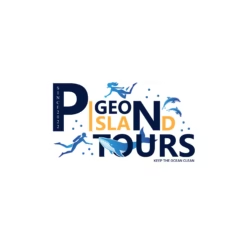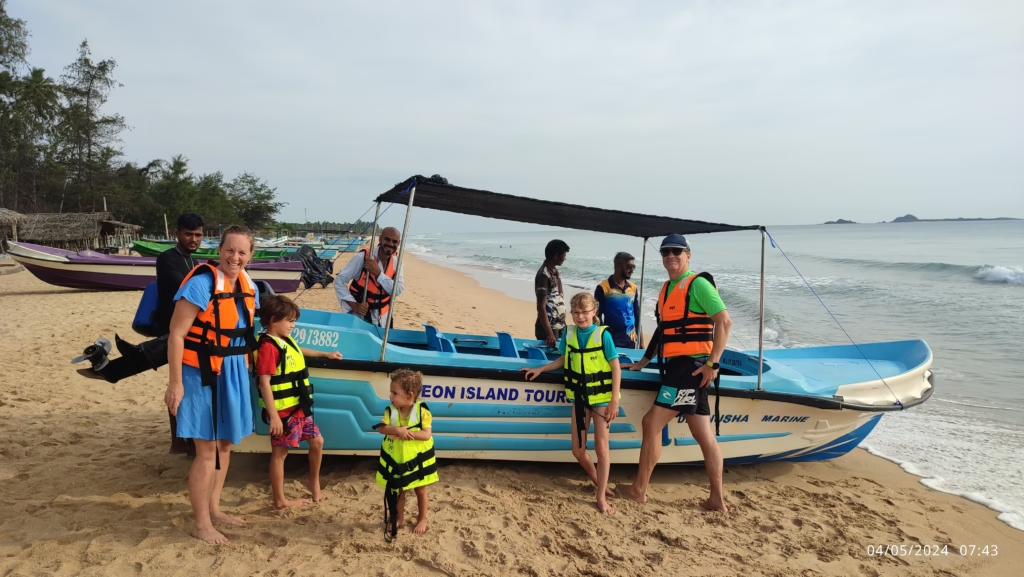Pigeon Island Diving
Pigeon Island Diving – Explore Sri Lanka’s Underwater Paradise
- Dive Sites and Depth
- Marine Life You Will Encounter
- Water Conditions and Diving Experience
- Best Seasons to Dive
- National Park Fees and Regulations
- Safety Guidelines for Diving
- Getting There and What to Expect
- Island Experience Tips
- Underwater Photography Tips
- Nearby Attractions & Combo Tours
- Book Your Pigeon Island Diving Tour
Dive Sites and Depth at >Pigeon Island
Pigeon Island Diving offers multiple dive sites suitable for beginners, intermediates, and advanced divers. Here are the main sites:
Main Reef
- Depth: 5–12 meters
- Ideal for beginners
- Colorful coral gardens and sandy patches
Coral Garden
- Depth: 8–15 meters
- Ideal for intermediate divers
- Dense coral formations with tropical fish and moray eels
Shark Point
- Depth: 12–18 meters
- Best for experienced divers
- Reef sharks, groupers, and barracudas
Pinnacle Dive Site
- Depth: 15–20 meters
- Certified divers recommended
- Vertical coral pinnacles and rich marine biodiversity

Internal Link: Read our Snorkeling at Pigeon Island guide for beginner-friendly adventures.
Marine Life You Will Encounter
Pigeon Island National Park is home to rich biodiversity. Expect to see:
- Tropical Reef Fish: butterflyfish, parrotfish, angelfish, clownfish
- Sharks & Rays: reef sharks, stingrays, eagle rays
- Sea Turtles: green turtles and hawksbill turtles
- Invertebrates: moray eels, lionfish, nudibranchs, sea urchins, octopus
- Corals: hard corals (staghorn, brain coral), soft corals (sea fans, sea whips)
External Link: Learn more about marine biodiversity in Sri Lanka here.
Water Conditions and Diving Experience
- Temperature: 27–30°C year-round
- Visibility: 10–20 meters
- Currents: Mild, suitable for all levels
Whether you are a certified diver or a beginner, Pigeon Island offers calm waters, spectacular coral reefs, and safe guided dives by Pigeon Island Tours.
Best Seasons to Dive
- January to April: Calm seas, excellent visibility, ideal for beginners
- May to September: Slightly rougher seas, fewer tourists, rich marine life
- October to December: Monsoon months, limited diving due to rough seas
Tip: Early morning dives provide the best visibility and calm waters.
National Park Fees and Regulations
Entry Tickets
- Foreign Adults: USD 15–25
- Local Adults: LKR 500
- Children: USD 5 / LKR 250
Tour Operator
Pigeon Island Tours handles all diving bookings, equipment, and experienced guides.
WhatsApp: +94 71 322 7050
Regulations
- Do not remove or touch corals
- No feeding marine life
- Follow guide and park instructions
- Littering is strictly prohibited
Safety Guidelines for Diving
- Always dive with a certified guide
- Check all equipment before each dive
- Never exceed your training limits
- Avoid rapid ascents
- Respect fellow divers and marine life
- Stay hydrated and rest between dives
Internal Link: Learn more at Diving Safety Tips.
External Link: Read official Sri Lanka Tourism information about Pigeon Island.
Getting There and What to Expect
Location: 15 km off Trincomalee town, Sri Lanka.
- Transport: Car, tuk-tuk, or private boat from Uga Jungle Beach / Trinco Blu
- Bring: Swimwear, sunscreen, towel, dive certification card, waterproof camera
Expect pristine beaches, calm waters for snorkeling, and shaded resting areas.
Island Experience Tips
- Explore shallow reefs during low tide
- Bring light snacks and stay hydrated
- Respect coral and marine life
- Enjoy sunrise/sunset views for photography
Underwater Photography Tips
- Use natural light for shallow reefs
- Waterproof camera or GoPro recommended
- Capture wide-angle coral formations and schools of fish
- Take close-ups of nudibranchs, sea urchins, and small creatures
- Avoid using flash that disturbs marine life
Nearby Attractions & Combo Tours
- Nilaveli Beach – Relaxation before/after diving
- Trincomalee Hot Springs – Natural geothermal springs
- Koneswaram Temple – Cultural visit in Trincomalee
- Whale & Dolphin Watching Tours – Combine with Pigeon Island diving
Internal Link: Check Whale & Dolphin Watching tours for combo options.
Book Your Pigeon Island Diving Tour
WhatsApp: +94 71 322 7050
Experience vibrant coral reefs, abundant marine life, and crystal-clear waters at Pigeon Island National Park – perfect for divers of all levels!
Prerequisites for Learning to Dive at Pigeon Island National Park
Pigeon Island Diving offers incredible underwater experiences, but before you begin your first dive, there are some essential requirements every diver should know. Understanding age limits, swimming skills, and health conditions will help ensure a safe and enjoyable introduction to the underwater world of Trincomalee.
1. Age Requirements
Most international diving organizations like PADI and SSI allow children as young as 10 years old to participate in Junior Open Water courses. However, for full certification and deeper dives (up to 18 meters), divers must be at least 15 years old.
At Pigeon Island Diving, we welcome families and younger learners with supervised programs designed to introduce them safely to marine life and buoyancy basics in shallow areas.
2. Swimming Skills
Diving does not require Olympic-level swimming skills, but basic comfort in the water is essential. Learners should be able to:
- Swim at least 200 meters without stopping (any stroke)
- Tread water or float for 10 minutes
- Feel comfortable breathing underwater using a regulator
Our instructors near Uga Jungle Beach and Trinco Blu by Cinnamon provide calm, shallow water sessions ideal for practice before exploring the reefs.
3. Health and Fitness
Divers should be in good general health, with no major respiratory or cardiovascular conditions. Before starting your Pigeon Island Diving lessons, it’s recommended to fill out a medical questionnaire provided by your instructor. If you have conditions such as asthma, heart problems, or recent surgeries, consult your doctor before diving.
Tip: Stay hydrated, get adequate sleep, and avoid alcohol before your dive. These small precautions ensure a safe and comfortable experience underwater.
Scuba Diving Certification Process at Pigeon Island
Becoming a certified diver opens the door to exploring coral reefs, shipwrecks, and marine ecosystems around the world. The certification process consists of three main phases, all of which can be started in Trincomalee with Pigeon Island Tours.
1. Knowledge Development
Before entering the water, new divers learn the theory of diving. This includes understanding:
- Basic physics of air pressure and buoyancy
- Effects of depth on breathing and nitrogen absorption
- Underwater communication signals
- Dive planning and safety procedures
Students can study online through PADI eLearning or attend in-person sessions with certified instructors from Pigeon Island Diving. We provide materials in English, French, and German for travelers worldwide.
2. Confined Water Dives
After the theory, you’ll move to a safe, shallow water environment—often near Nilaveli Beach—to practice essential diving skills. Here, students learn to:
- Clear the mask of water underwater
- Recover a lost regulator
- Achieve neutral buoyancy
- Practice controlled ascents and descents
Confined water dives help build confidence and prepare learners for open water dives at Pigeon Island National Park.
3. Open Water Dives
Finally, you’ll complete four open water dives at Pigeon Island Diving sites. Under professional supervision, you’ll apply everything learned in real conditions — exploring coral gardens, swimming alongside reef fish, and practicing navigation techniques.
Once all dives and tests are completed, you’ll earn your internationally recognized Open Water Diver certification, valid worldwide.
How Diving Works – Understanding the Equipment
To fully appreciate Pigeon Island Diving, it helps to understand how scuba equipment allows humans to breathe, move, and stay safe underwater. Let’s explore each essential component:
1. Scuba Tank
The scuba tank stores compressed air (usually around 200–300 bar). The air inside is filtered and safe for breathing. Tanks come in aluminum or steel, each affecting buoyancy differently. They supply air through a regulator connected by a high-pressure hose.
2. Regulator
The regulator delivers air to the diver at ambient pressure. It consists of two stages: the first stage reduces the high tank pressure, and the second stage provides breathable air through the mouthpiece. The regulator also includes a submersible pressure gauge to monitor remaining air.
3. Buoyancy Control Device (BCD)
The BCD helps divers control their buoyancy by inflating or deflating an air bladder. It allows divers to float at the surface, hover mid-water, or descend gently. Mastering BCD control is essential for safe Pigeon Island Diving experiences and for protecting fragile coral reefs below.
4. Dive Mask
The mask creates an air space in front of your eyes, allowing clear vision underwater. Masks must fit snugly to prevent leaks. Anti-fog treatments and proper clearing techniques are part of every beginner’s training.
5. Fins
Fins enable smooth movement through water with minimal effort. Proper finning techniques reduce energy use and prevent stirring up sediment over coral reefs. Divers at Pigeon Island often use open-heel fins with adjustable straps for comfort and versatility.
For detailed gear information, visit SSI Diving Equipment Guide.
Key Diving Techniques for Pigeon Island Diving
Learning to dive safely and effectively requires mastering key underwater techniques. These skills enhance control, safety, and enjoyment during every Pigeon Island Diving trip.
1. Breathing Techniques
Divers breathe slowly and deeply through the regulator, avoiding rapid or shallow breaths. Slow breathing conserves air and prevents carbon dioxide buildup. Remember the golden rule: Never hold your breath while diving.
Controlled breathing also helps maintain buoyancy and calmness when observing marine life like turtles or reef sharks at Pigeon Island National Park.
2. Equalizing Pressure
As you descend, pressure increases, compressing air spaces in the ears and sinuses. Divers must “equalize” by gently pinching their nose and blowing or swallowing to balance pressure. Equalizing early and often prevents discomfort and ear injuries.
3. Buoyancy Control
Buoyancy is the art of staying neutrally balanced underwater—neither sinking nor floating. Divers use the BCD, lung volume, and proper weighting to achieve perfect buoyancy. Mastery of buoyancy control protects delicate coral reefs and improves underwater photography results.
4. Communication Underwater
Because speech isn’t possible underwater, divers rely on standardized hand signals. Before every dive, guides at Pigeon Island Tours review essential signals for “OK,” “Up,” “Down,” “Out of Air,” and “Problem.” Practicing these ensures clear understanding and team safety.
5. Safe Ascents and Descents
Always descend slowly, equalize often, and ascend no faster than 18 meters per minute. A 3-minute safety stop at 5 meters helps release excess nitrogen and prevents decompression sickness. All Pigeon Island Diving trips include a professional guide monitoring ascent rates.
Questions and Answers with Your Diving Instructor – Diving at Pigeon Island National Park
Diving at Pigeon Island National Park offers an incredible mix of coral gardens, tropical fish, and calm conditions — perfect for both beginners and certified divers. Before you dive, it’s important to ask the right questions. Here’s what to ask your instructor or dive master — and what their answers typically include.
💦 Questions & Answers for Beginner Divers
Q1: What is the maximum depth for beginner dives at Pigeon Island National Park?
A: Beginner divers usually dive between 5 to 12 meters. The shallow coral reefs around Pigeon Island are perfect for first-timers and allow safe exploration with good visibility.
Q2: How long will the training and orientation session take before diving?
A: Expect a 20–30 minute briefing that covers breathing techniques, equipment use, underwater communication, and safety guidelines.
Q3: Can I practice in shallow water first to get comfortable with the equipment?
A: Yes. Every dive begins with a short practice in shallow, waist-deep water where you can adjust your mask, regulator, and buoyancy control before moving to deeper areas.
Q4: How do I communicate underwater using hand signals?
A: Your instructor will teach you a few universal signals, such as “OK,” “Go Up,” and “Problem.” These help you communicate clearly while diving.
Q5: What should I do if I feel nervous or want to surface early?
A: Simply give the “thumbs up” signal and your instructor will slowly help you surface while ensuring your safety and comfort.
Q6: Are there any marine species I should avoid touching?
A: Absolutely! Touching corals or marine animals can harm both you and them. You’ll enjoy observing fish and coral closely without contact.
Q7: How do I control my breathing and buoyancy effectively?
A: Breathe slowly and deeply through your regulator. Use your Buoyancy Control Device (BCD) to maintain neutral buoyancy and avoid bumping into coral.
Q8: Will a certified instructor be with me during the dive?
A: Yes, each beginner diver is accompanied by a certified instructor throughout the dive for maximum safety and guidance.
🌊 Questions & Answers for Certified Divers
Q1: What are the best dive sites and depths around Pigeon Island?
A: Popular sites include the North Reef (10–18 meters) and Coral Garden Wall (up to 22 meters). These areas feature vibrant coral life and larger species like reef sharks and rays.
Q2: What visibility can I expect today, and how are the water conditions?
A: Visibility at Pigeon Island usually ranges from 15–25 meters depending on the season. Calm waters from March to September make it ideal for diving.
Q3: Is there any current or drift at specific sites?
A: Most sites have mild currents, perfect for relaxed dives. Your dive master will check tide and wind conditions before departure.
Q4: Can I bring my own equipment?
A: Yes, you may bring your own gear. Our dive center also provides clean, high-quality equipment and freshwater rinsing facilities.
Q5: Are there local diving regulations specific to the park?
A: Pigeon Island National Park requires all divers to enter with a licensed tour operator. Touching coral, feeding fish, or collecting shells is strictly prohibited.
Q6: Do you offer Nitrox or advanced dive options?
A: Yes, we offer Nitrox dives and deep-dive trips for experienced divers. Please request in advance for gas mixture preparation.
Q7: Can I plan night or multi-dive trips?
A: Multi-dive trips are available daily. Night dives can be arranged with prior notice depending on park regulations and sea conditions.
Q8: Are underwater cameras or GoPros allowed?
A: Yes, you can bring your own GoPro or rent one. However, please maintain distance from corals and avoid disturbing marine life while filming.
🤿 Safety & Preparation Tips
- Always dive with a certified instructor or buddy system.
- Check weather and sea updates from the Sri Lanka Meteorological Department.
- Keep hydrated and avoid alcohol 24 hours before diving.
- Plan your surface interval and never fly immediately after diving.
Book Your Dive at Pigeon Island National Park
Join our certified instructors for an unforgettable underwater journey filled with vibrant coral reefs and marine wonders. Contact us now for private or shared dive tours.
📱 Chat with us on WhatsApp: +94 71 322 7050
🔗 Internal Links
- Pigeon Island Snorkeling Tour
- Whale & Dolphin Watching Trincomalee
- Trincomalee City Tour
- Cook With Nimali Sri Lankan Cooking Experience
🌐 Outbound Resources
Ready to Dive with the Experts?
Book your professional diving experience at Pigeon Island with our certified instructors. Safety, fun, and marine discovery guaranteed!


Pigeon Island Diving Pigeon Island Diving Pigeon Island Diving Pigeon Island Diving Pigeon Island Diving Pigeon Island Diving Pigeon Island Diving Pigeon Island Diving Pigeon Island Diving Pigeon Island Diving Pigeon Island Diving Pigeon Island Diving
Excursion complète à Pigeon Island
Excursion complète à Pigeon Island – Réservation Snorkeling à Trincomalee Excursion complète à Pigeon Island…
Sri Lanka holiday deals from UK
Sri Lanka Holiday Deals from UK — Pigeon Island Tours Sri Lanka Holiday Deals from…
Sri Lanka Tour Packages from UK
Sri Lanka Tour Packages from UK — Pigeon Island Tours Sri Lanka Tour Packages from…
Minneriya Eintritt – Ihr Abenteuer im Herzen Sri Lankas
Minneriya Safari Tickets – Ihr Abenteuer im Herzen Sri Lankas 🐘 Minneriya Eintritt – Ihr…
Minneriya Safari Tickets – Safari Book with Pigeon Island Tours 2026
Minneriya Safari Tickets – Safari Book with Pigeon Island Tours 2026 Power tip: Book Safari…
Pigeon Island Sri Lanka – Eintritt & Tickets für Ausländer Jetzt buchen! Nicht verpassen
Eintritt & Tickets für Ausländer – Jetzt buchen! Nicht verpassen Eintritt Tickets für Ausländer Nicht…
![]()



